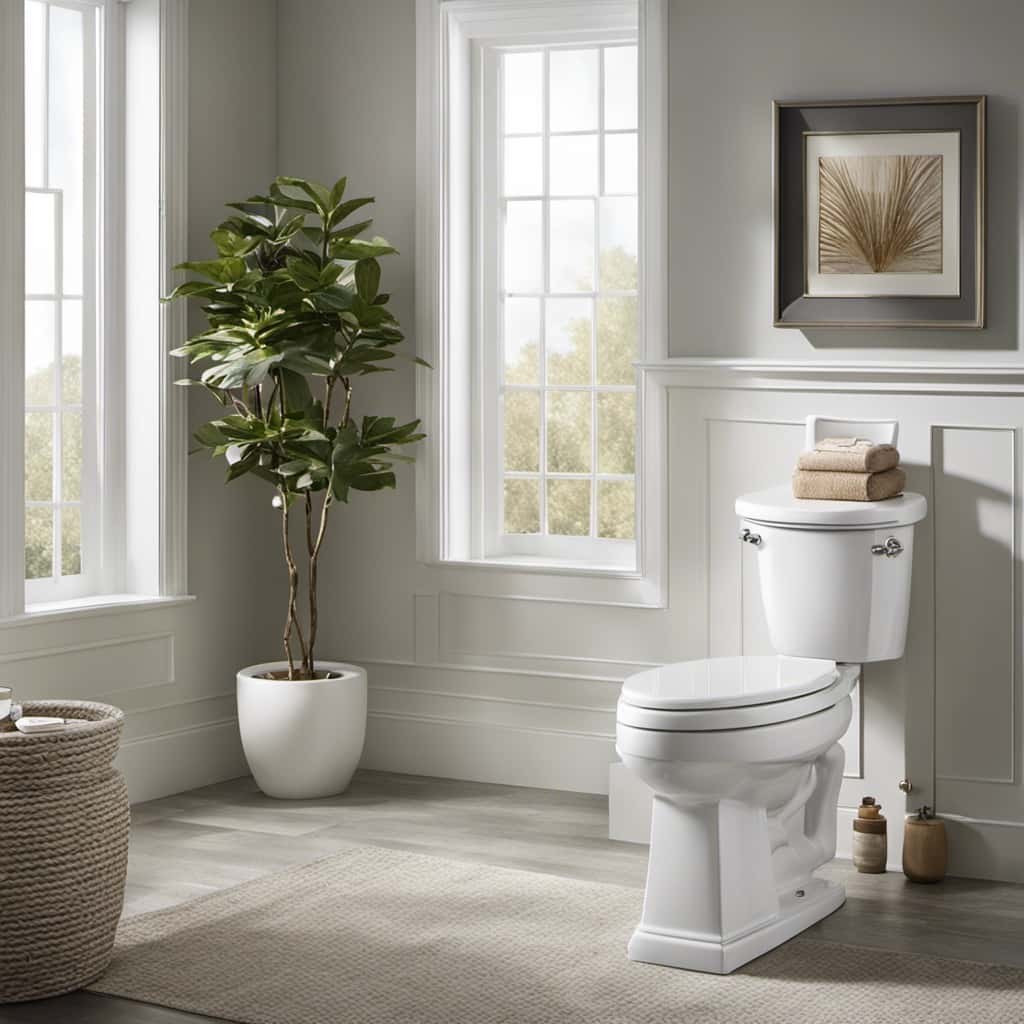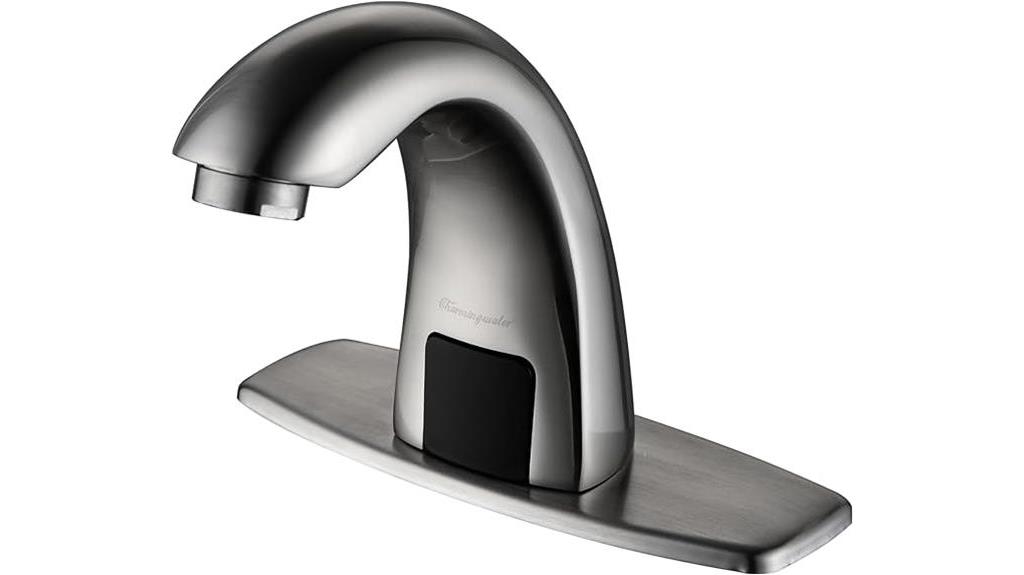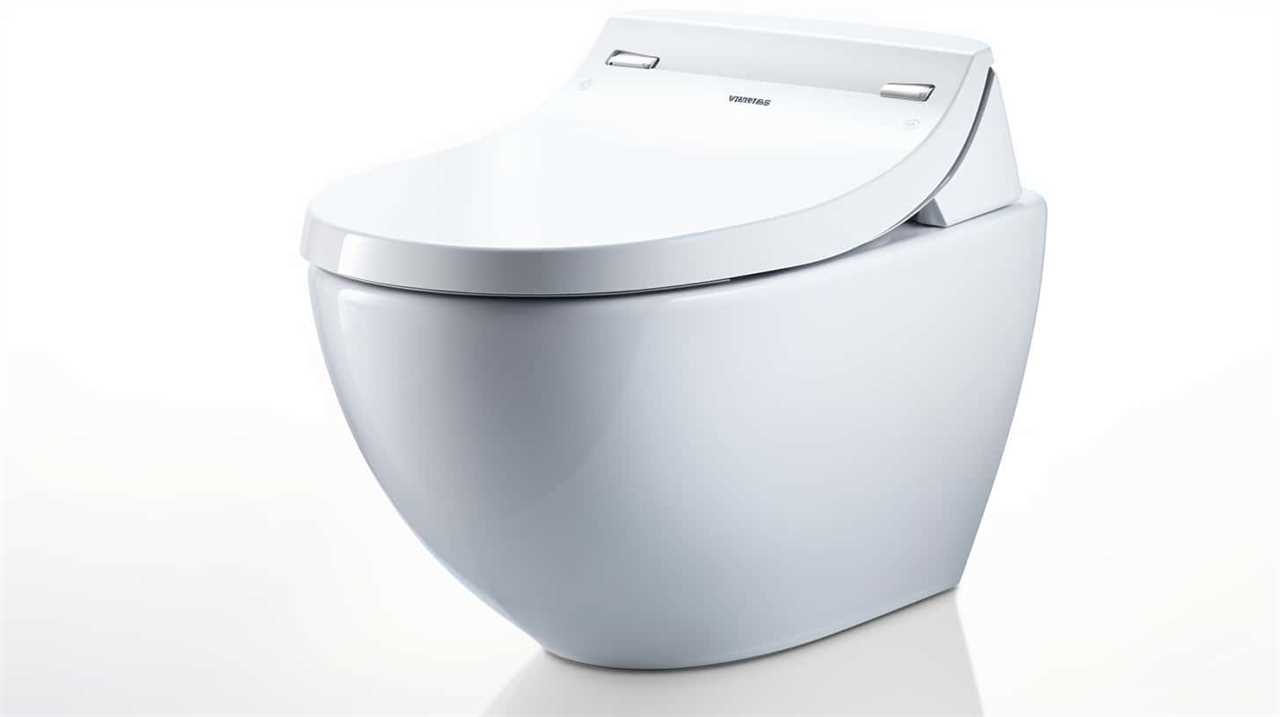Are you tired of dealing with that stubborn brown residue in your toilet tank? We’ve got you covered!
In this article, we’ll show you the most effective methods to eliminate that unsightly buildup. From using simple household ingredients to powerful commercial cleaners, we’ll guide you through step-by-step.
Say goodbye to brown residue and hello to a sparkling clean toilet tank. Get ready to become a master at banishing that pesky problem once and for all!
Key Takeaways
- Regular cleaning and maintenance, along with the use of a water softener or filter, can help prevent brown residue in the toilet tank.
- DIY cleaning methods using vinegar and baking soda are effective and affordable alternatives to harsh chemical cleaners.
- Commercial cleaners can be used for stubborn brown residue, but eco-friendly or biodegradable options should be chosen to minimize environmental impact.
- Hiring professionals for toilet tank maintenance provides time-saving, long-term solutions, peace of mind, expertise, and high-quality results.
Understanding the Cause of Brown Residue
We need to understand the cause of brown residue in our toilet tank in order to effectively prevent it in the future.

One common misconception about brown residue is that it’s caused by dirt or rust in the water supply. However, the actual culprit is usually mineral deposits. These deposits can accumulate over time, especially in areas with hard water. The minerals, such as iron or manganese, react with the oxygen in the water and form a brownish residue.
Another misconception is that using bleach or other regular cleaning agents will prevent brown residue. While these cleaners may temporarily remove the residue, they don’t address the root cause.
To prevent brown residue, it’s important to regularly clean and maintain the toilet tank, and consider using a water softener or filter to reduce mineral buildup.
Removing Brown Residue With Household Ingredients
To effectively remove brown residue in your toilet tank, start by using common household ingredients.

There are several natural cleaning methods that can help you tackle this problem without resorting to harsh chemicals.
One option is to mix equal parts vinegar and water and pour it into the tank. Let it sit for a few hours, then scrub the residue with a toilet brush.
Another method is to sprinkle baking soda into the tank and then pour in some vinegar. This will create a fizzing reaction that helps break down the residue. After letting it sit for a while, scrub the tank and flush the toilet.
Both of these DIY toilet tank cleaning methods are effective and affordable, making them a great choice for those who prefer natural cleaning solutions.

Using Commercial Cleaners for Stubborn Brown Residue
Now that we’ve explored natural cleaning methods, how can we effectively tackle stubborn brown residue in the toilet tank using commercial cleaners? When dealing with tough stains, commercial cleaners can provide an alternative cleaning method for removing brown residue.
These cleaners contain powerful chemicals that break down stubborn stains and dissolve them, making them easier to remove. However, it’s important to consider the environmental impact of using commercial cleaners. Many of these products contain harsh chemicals that can be harmful to the environment.
To minimize this impact, choose cleaners that are labeled as eco-friendly or biodegradable. Additionally, follow the instructions carefully and avoid using excessive amounts of cleaner.
Transitioning into the next section, let’s now explore preventative measures to avoid future buildup of brown residue.
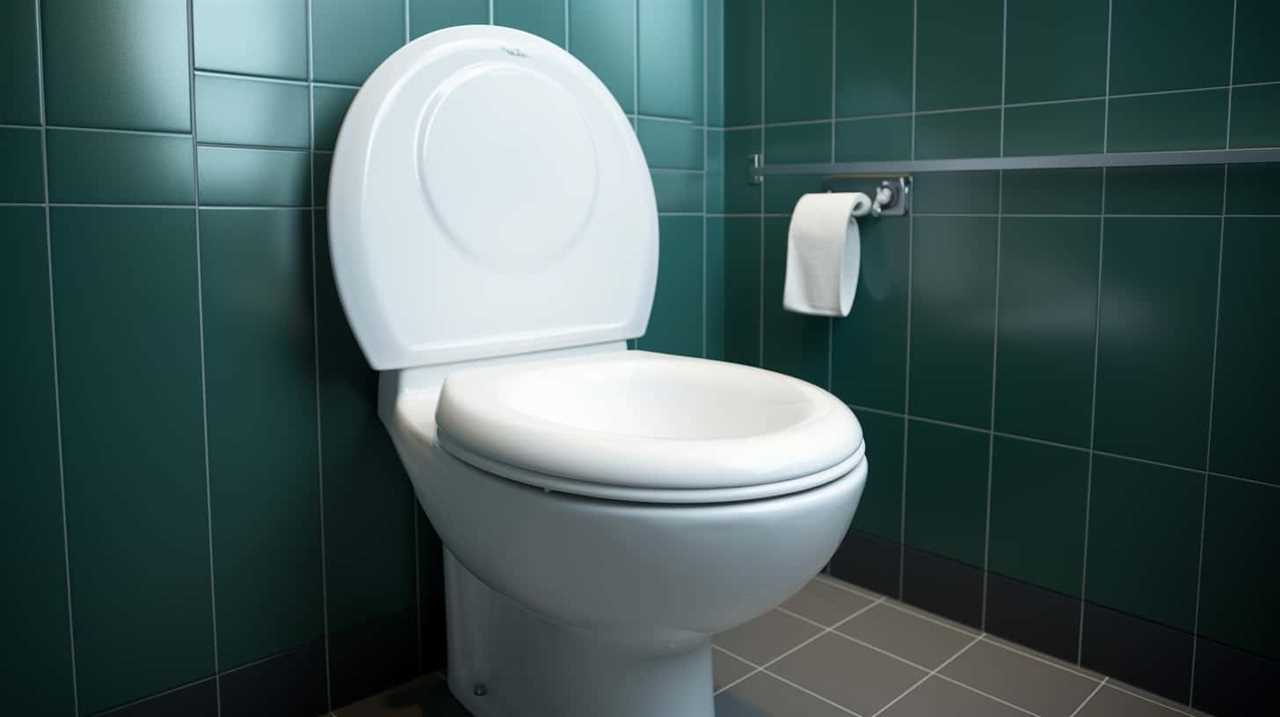
Preventing Future Buildup of Brown Residue
To prevent future buildup of brown residue in our toilet tanks, regular maintenance is essential. By implementing a few simple habits and using eco-friendly alternatives, we can keep our toilet tanks clean and prevent long-term damage. Here are some practical tips to follow:
| Regular Maintenance | Eco-Friendly Alternatives |
|---|---|
| – Clean the toilet tank at least once a month to remove any potential residue buildup. | – Use vinegar and baking soda instead of harsh chemical cleaners. Mix equal parts of vinegar and water, and sprinkle baking soda into the toilet tank. Let it sit for a few minutes before scrubbing with a toilet brush. |
| – Check the toilet tank flapper regularly for any signs of wear or damage. Replace it if necessary. | – Consider using chlorine-free toilet tank tablets or drops to keep the water clean without harmful chemicals. |
| – Install a water softener if you have hard water, as this can help prevent mineral buildup in the tank. | – Use a toilet tank bag or pouch filled with natural cleaning agents, such as borax or citrus peels, to continuously clean the tank. |
Seeking Professional Help for Persistent Brown Residue
If we’re unable to remove persistent brown residue in our toilet tank through regular maintenance and eco-friendly alternatives, it may be necessary to seek professional help. While we may prefer to tackle the problem ourselves, there are times when DIY methods for brown residue just won’t cut it. Seeking alternative solutions is crucial in maintaining the cleanliness and functionality of our toilet tanks. Here are some reasons why professional help should be considered:
- Expertise: Professionals have the knowledge and experience to identify the root cause of the brown residue and provide effective solutions.
- Specialized Tools: They’ve access to specialized tools and equipment that can thoroughly clean the tank and eliminate the stubborn residue.
- Time-saving: Hiring professionals allows us to save time and effort, as they can efficiently resolve the issue.
- Long-term solutions: Professionals can provide long-term solutions to prevent the recurrence of brown residue.
- Peace of mind: By seeking professional help, we can have peace of mind knowing that the problem will be resolved effectively and efficiently.
Frequently Asked Questions
Can I Use Bleach to Remove Brown Residue in My Toilet Tank?
Yes, we can use bleach as a DIY toilet tank cleaner to remove brown residue. However, it’s important to consider bleach alternatives for a more environmentally friendly solution.
How Often Should I Clean My Toilet Tank to Prevent the Buildup of Brown Residue?
To prevent the buildup of brown residue in our toilet tank, we should clean it regularly. Following best practices, it’s recommended to clean the tank at least once every few months for optimal maintenance.

What Are Some Natural Alternatives to Commercial Cleaners for Removing Brown Residue in My Toilet Tank?
To get rid of brown residue in our toilet tank, we can try using natural cleaning methods like vinegar and baking soda. These alternatives are effective, environmentally-friendly, and easily accessible for a thorough clean.
Is Brown Residue in the Toilet Tank Harmful to My Health?
Brown residue in the toilet tank is typically caused by hard water. It is not harmful to health, but it can be unsightly. Common causes include mineral deposits and rust.
Can I Use a Toilet Brush to Scrub the Inside of the Toilet Tank and Remove the Brown Residue?
Yes, we can use a toilet brush to scrub the inside of the toilet tank and remove the brown residue. However, there are alternative cleaning methods that may be more effective for toilet tank maintenance.
Conclusion
Toilet tanks can be prone to brown residue buildup, but don’t worry, there are solutions.
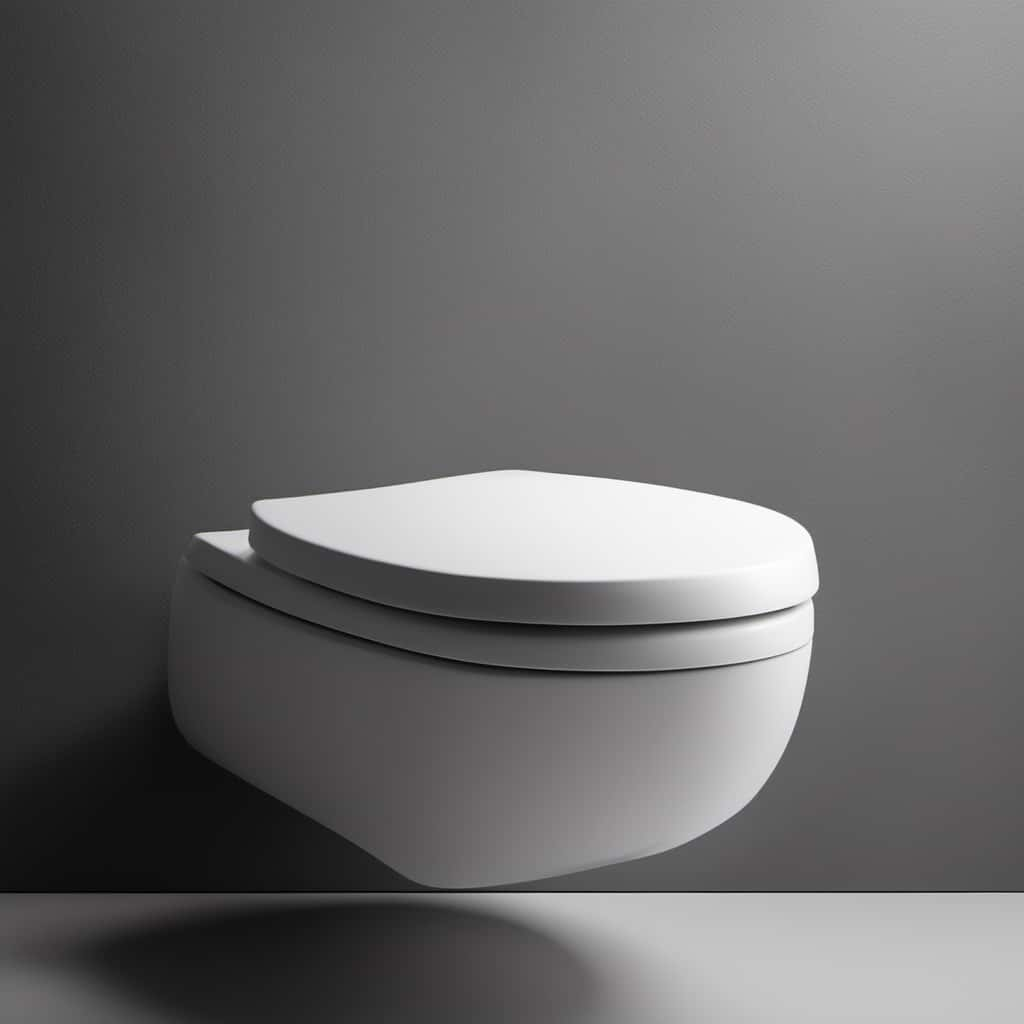
By using household ingredients like vinegar or baking soda, you can effectively remove the residue.
For stubborn stains, consider using commercial cleaners specifically designed for toilet tanks.
To prevent future buildup, regular cleaning and maintenance are key.
If the problem persists, it’s best to seek professional help.

Remember, a clean toilet tank is essential for a fresh and hygienic bathroom experience.
So, don’t let that brown residue linger!



